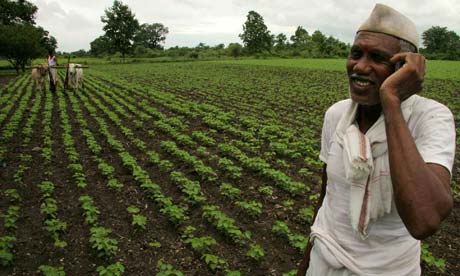 Many people (including me) dislike 3G for the fact that it has low caps, varying speeds, bit high latency and lastly super expensive. Well, all that is true, but still 3G makes lot of sense.
Many people (including me) dislike 3G for the fact that it has low caps, varying speeds, bit high latency and lastly super expensive. Well, all that is true, but still 3G makes lot of sense.
How ?
Today I had a very interesting experience where I saw a farmer siting next to me in bus and looking into commodity prices in cell phone’s web browser! (wow!)
Well that was really interesting. I could feel how technology is going in the grass roots of India & eventually changing life of rural India. He was not using 3G, but it was 2G running on a average (I guess ~5000Rs) cell phone.
It has no direct relation with 3G, but I believe we will see more similar things in future. I am quite sure most of farmers of his age/level probably don’t have computer at home due to cost as well as complexity of a computer, while he was able to do “what was required” using simple GPRS on phone.
I kept on looking at him for a while, and couldn’t resist asking him - how he learned to use Internet on cell phone? His reply was - I don’t know anything about computers but a kid from village set the phone in some manner that when he presses 0, he gets latest commodity prices”.
I realized that someone probably set a commodity price site as “homepage” and told him press 0 for long time (Nokia homepage shortcut!) and he was able to view prices - neat & simple!
I myself have used a number of operating systems including various flavors of Linux, Windows etc and the simplest one I saw was chrome os (in cr48) and I think that’s still way too complex then a simple “press 0 and done” type interfaces.
Thus, we see one of biggest problems in India is not really slow broadband speeds, or capped connections. It’s very poor PC penetration, and major factor for that is cost as well as complexity. As cell phones are getting more “smart”, we are getting very good solution for that problem.
I agree that most of such cheap cell phones have very limited functionality and we can’t really compare them to computers, but point is - those devices can do “required work” so beautifully for low rate. There are still many limitations on such devices and one of prime one remains slow Internet speeds giving bit poor experience to end user. Here 3G can really do the magic.
It’s correct that spectrum allocated in India is very low as compared to demand/requirement but still for such rural areas which are totally out of PC penetration, cheap 3G phones can do a lot. And eventually we will see more and more tablets based on open source OS like android in range of ~4000-5000Rs.
Such devices can do a lot in bringing “Internet experience” in rural India. Mass adoption of wireless computing devices will eventually lead to very high demand in data usage and will help in bringing prices down for existing users also (on fixed broadband networks).
It is very unfortunate that too much delay and super hype created by Indian media about 3G, actually disappointed a number of end users who expected super cheap 3G services as they enjoy 2G based data plans. At this point we really need to understand the potential and limitations of technology.
Here’s what to expect from 3G:
1)It is not meant as alternate for fixed broadband in (big) cities. No, not at all!
2)Allocated spectrum of 5Mhz in 2.1Ghz band isn’t something technically very good in terms of wave penetration as well as capacity. Limited capacity leads to low usage caps, and eventually expensive data plans.
3)3G is quite good if one if looking at it as an alternate for slow 2G connections which were mostly used on cell phones.
4)3G is quite good for Rural areas where demand is still very low, and using 3G, one can have very low cost deployment which is almost impossible for wired broadband networks.
5)Current prices of 3G plans is quite high, and low spectrum availability followed by aggressive bidding is responsible for it. Don’t expect any significant change in price for around an year.
6)3G is not just about data, but about capacity & such additional (few x times more) capacity can be used for voice also. That’s where 3G will help in big cities to operators who already have quite limited spectrum left in 2G for voice telephony.
And at the end good thing is - despite of high spectrum costs, we can see operators are still quite active in deploying 3G. It has been less then an year, and many cities are already covered. BWA still seems bit far mostly due to the fact that Mobile WiMax seems outdated choice while LTE is yet not mature enough.
There has been no standards in LTE for carrying voice telephony on completely IP based backhual as well. LTE will have few times more capacity then 3G, thus we can expect better pricing plans, but again main magic of LTE will also be mass adoption in form of small tablet PC’s etc and not really as fixed broadband alternate where one expects ~50GB a month usage for reasonable price.
(That’s all from me for now. Will look forward towards your comments & questions!)
With hope to see a farmer streaming Youtube videos soon, time to say bye! :)
Picture Courtesy : Guim.co.uk















